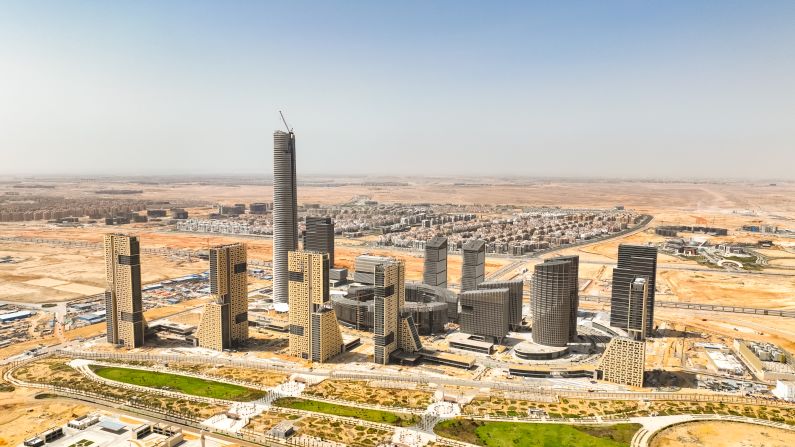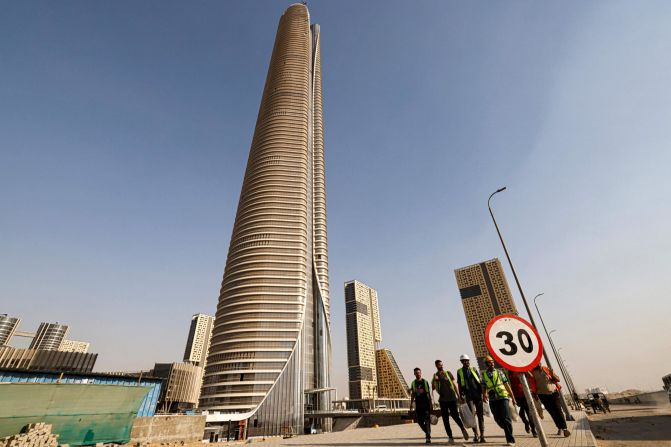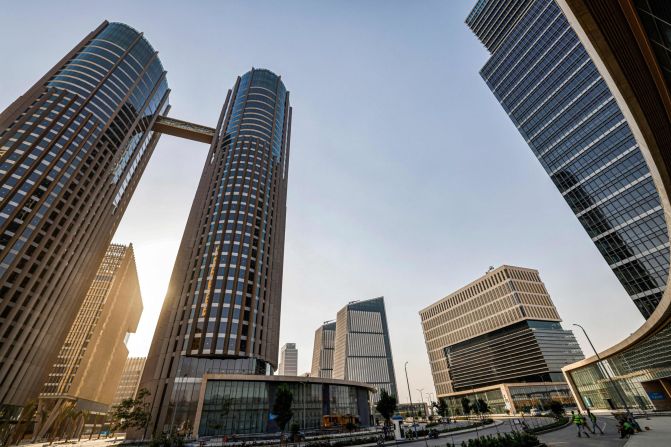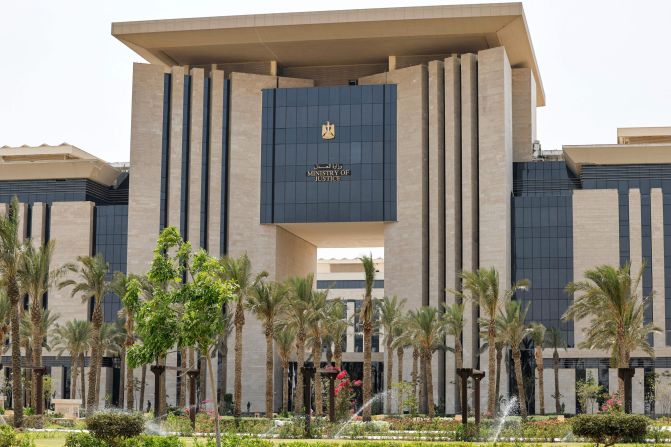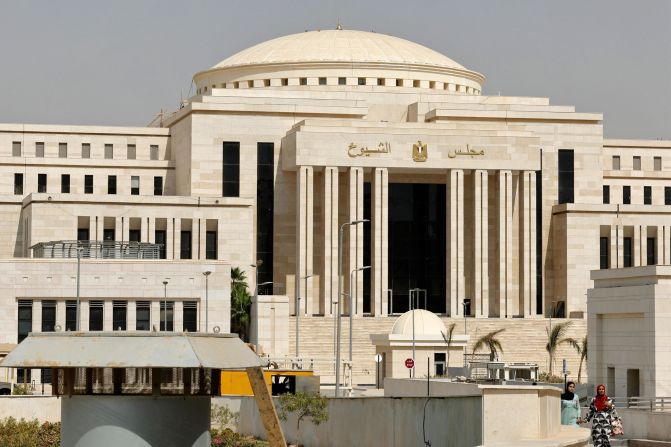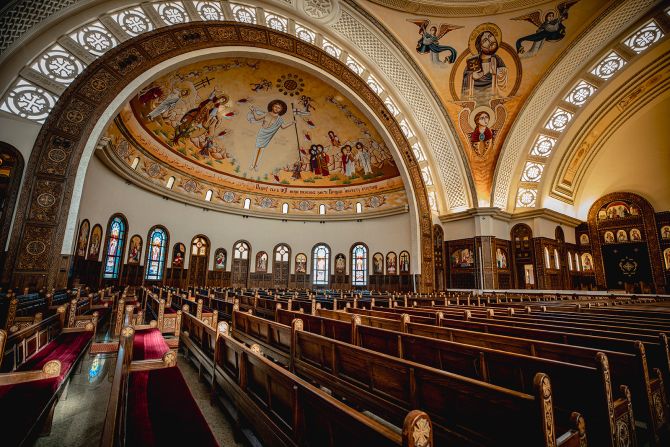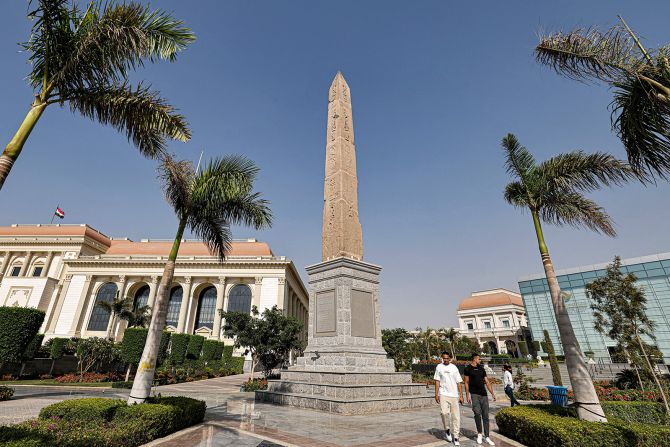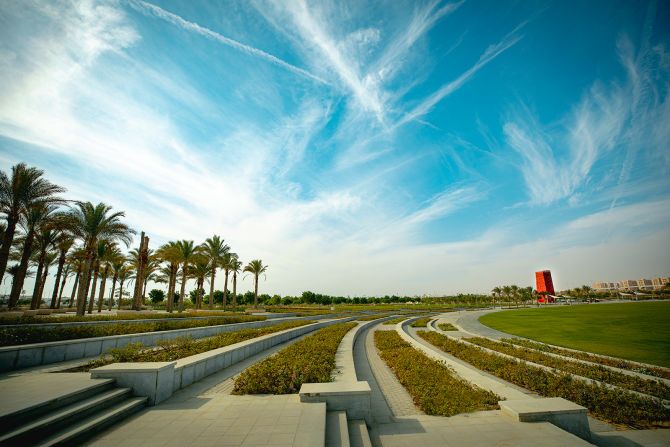In an expanse of desert 30 miles east of Cairo, Egypt, a new city is rising. Already boasting the tallest tower in Africa and the biggest cathedral in the Middle East, the city is one of a series of President Abdel Fattah el-Sisi’s grand megaprojects intended to develop the country’s economy.
Construction of the “New Administrative Capital” began in 2016, and is being completed in phases. According to Khaled Abbas, chairman of the Administrative Capital for Urban Development (ACUD), the company overseeing the project, phase one is almost complete and phase two is expected to begin in the last quarter of this year.
Slowly but surely, life is beginning to trickle into the city. More than 1,500 families have moved in, according to Abbas, and by the end of 2024, he expects this number to have risen to 10,000.
With government ministries relocating to the new city, there are already around 48,000 government employees working there, he says, many of whom commute from eastern Cairo via an electric train that started operating last year. In March, as parliament starts directing its meetings from the city and several banks and businesses move their headquarters there, more people are expected to move in.
Eventually, “the whole country will be managed from within the new capital,” Abbas adds.
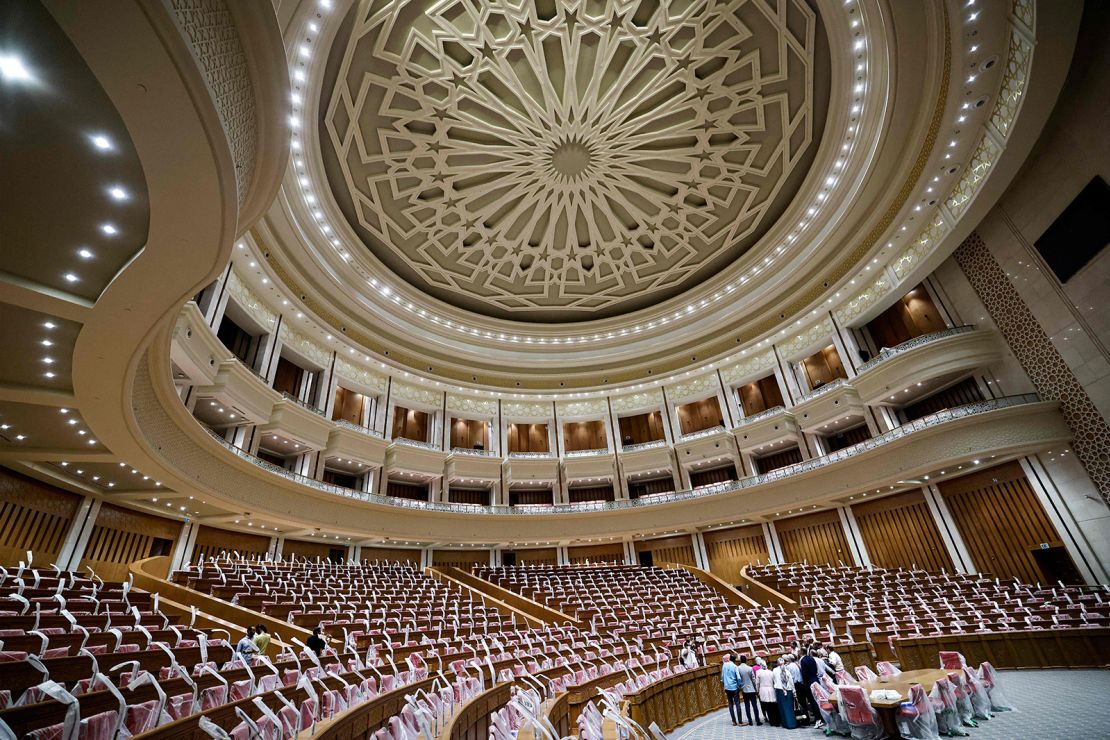
He says phase one cost around 500 billion Egyptian pounds ($10.6 billion). The project has previously been estimated to cost around $58 billion in total, with the government saying it will be funded by ACUD and the proceeds of land sales, although some reports suggest it is costing the state billions.
Critics are concerned about the expense as the country goes through a period of economic downturn and deals with increased pressures from the war in Gaza. Egypt’s economy is being boosted by international funding, including from the World Bank, which announced Monday that it would provide Egypt with more than $6 billion over three years. Earlier this month, the International Monetary Fund said it would increase its current loan program for Egypt from $3 billion to $8 billion, contingent on economic reforms, including a “new framework to slow down infrastructure spending,” to help reduce inflation and preserve debt sustainability.
ACUD, which is 51% owned by the military and 49% by the housing ministry, told CNN that the development of the city would not be affected by the IMF announcement. In February, ACUD announced that Dar, a global architecture and engineering firm involved in phase one of the city, had been awarded the contract to create a detailed master plan for phases two, three and four of the capital. Abbas says that the second phase is expected to cost around 300 billion Egyptian pounds ($6.4 billion).
Continental hub
The New Administrative Capital is centered around a financial district where some international banks and businesses will have their global headquarters. Last year, Afreximbank announced it would be acquiring land in the city for an African Trade Centre, housing its global headquarters, a conference center, hotel and an innovation hub, which it has described collectively as a “one-stop-shop business complex” for intra-African trade. A consortium of unnamed companies from the United Arab Emirates and South Africa announced that they would be forming a financial hub in the capital.
Abbas believes that the city’s modern infrastructure will attract businesses. An artificial intelligence system will optimize the use of electricity, gas and water, as well as waste management, he says. Optical fiber infrastructure and the deployment of 5G will help connectivity, and there will be high-tech security services, with thousands of surveillance cameras installed across the city that will also track traffic and alert congestion and accidents.
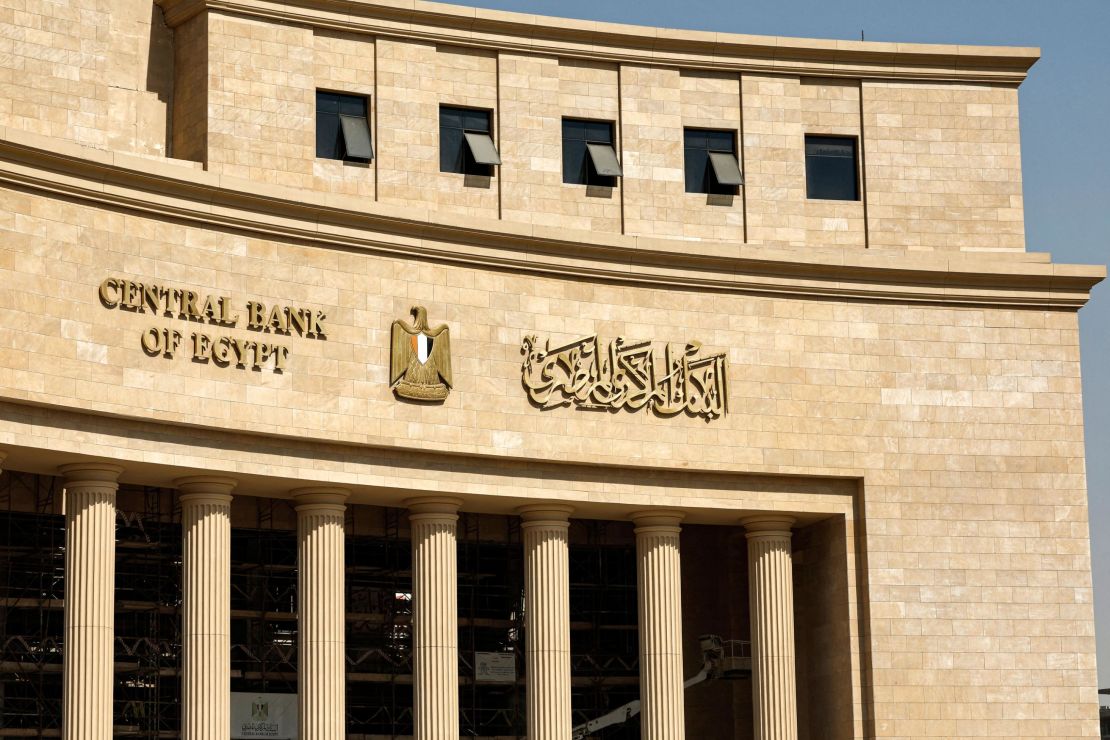
“All the big international companies are looking for smart cities and sustainability,” he says. “We are trying to facilitate all kinds of services to make doing business here easy.” He hopes that Egypt’s smart city design will become “a role model for other countries in Africa,” contributing to the wider region’s economic development.
Nicholas Simcik Arese, chair of history and theory at the Architectural Association, in London, who has done extensive field research in Cairo, says that it is possible that the new city will attract business, particularly “high-level bilateral partnerships” and foreign capital that could boost the economy. “However, the ultimate question when it comes to economic benefits for countries is to whom does it accrue, and almost certainly this will only accrue to a very, very small segment of the population,” he tells CNN.
He points to a history of Egyptian leaders building satellite cities close to Cairo as transformational projects, such as “6th of October” and “New Cairo,” established in 1979 and 2000 respectively. Today, these cities are almost entirely gated communities, catering to upper middle classes, and often with many vacancies, he says.
Taking the pressure off Cairo
Some critics argue that a key motivation behind the new city is to allow the government to keep its distance from large protests, like those that happened in 2011 around Cairo’s Tahrir Square. Simcik Arese notes that urban planning of the new city would make mass marches “virtually impossible.”
The most cited argument behind the government’s decision to build a new capital is the need to accommodate Egypt’s growing population and to relieve congestion and pollution in Cairo, which has one of the highest population densities in the world. Twenty-two million people live in Greater Cairo – up to 50,000 per square mile.
Abbas says that the new city promises more green space. Landscaping has begun on a park, dubbed the “Green River,” that will cover an area twice the size of New York City’s Central Park, although there have been questions over how this will be irrigated considering the arid landscape and the country’s scarce water supplies.
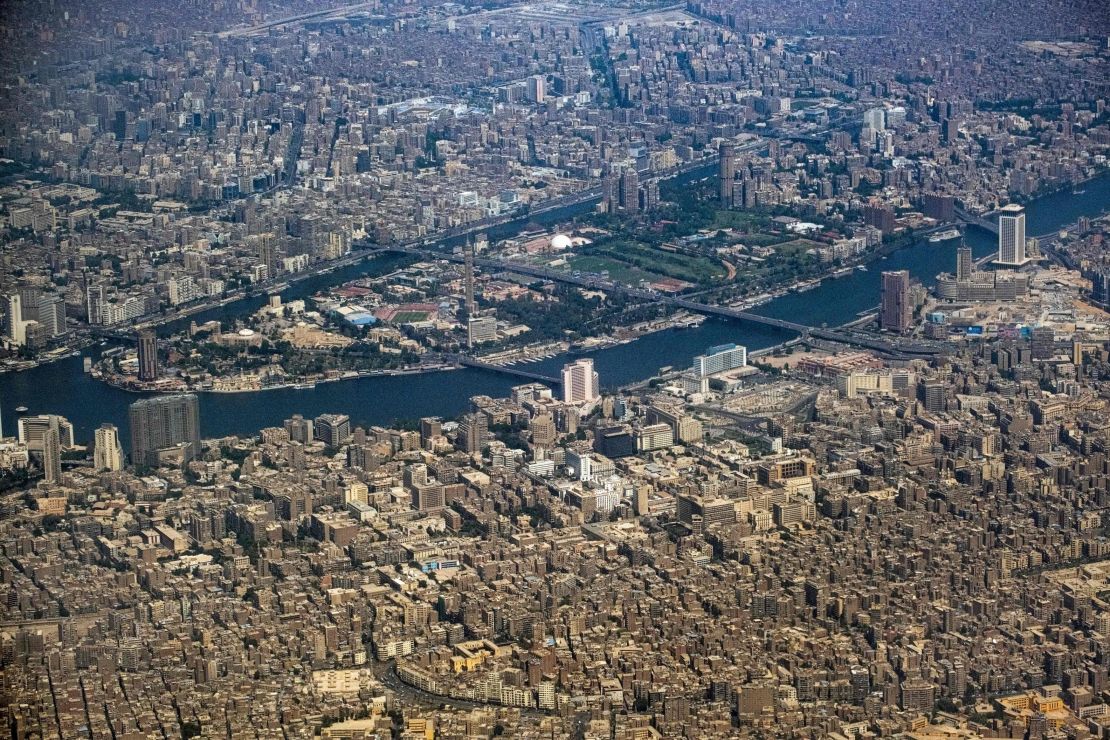
Simcik Arese acknowledges Cairo is overcrowded, but he challenges whether the solution is building a new city. “The issue of a crowded Cairo is not just to do with uncontrollable population growth, but people’s ability to access decent livelihood where they’re from,” he says.
“There’s a lot of existing housing stock in Cairo that is perfectly workable, and if the government were to spend even a small fraction of that investment on helping people’s existing cities actually work, I think the question of overcrowdedness would go away very quickly.”
Abbas says that Cairo’s old infrastructure has passed the point of being upgraded, and while he would not give direct numbers on the affordable housing that will be available, he insists that the new city will cater for all parts of society.
“The cost of living here is the same as in the old city, but with a difference that you’re living in a new city, a smart sustainable green city,” he says. “Our role is to give a quality of life to the people.”

